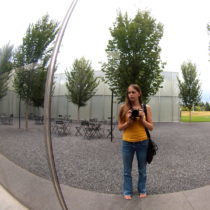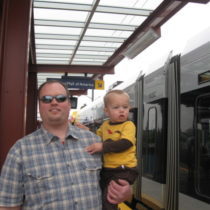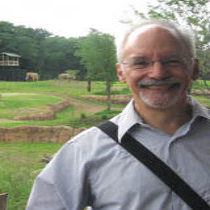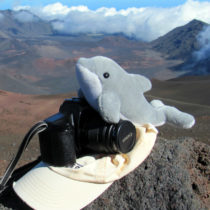Landscape Architecture for Landscape Architects › Forums › GENERAL DISCUSSION › Nerds in the landscape (How does lar respond to a tech culture?)
- This topic has 1 reply, 12 voices, and was last updated 13 years, 4 months ago by
 Andrew Garulay, RLA.
Andrew Garulay, RLA.
-
AuthorPosts
-
August 15, 2012 at 7:38 pm #156812
 Emily StruthersParticipant
Emily StruthersParticipantThank you for trying to rationalize my proposals. Yes, some of them are a little off the wall but, simply by considering them it brings us to more questions. I’m a fan of questions, they sometimes lead to answers.
I guess what I’m doing with this whole post thread here, is trying to figure out what other questions can be asked about culture today and in the future. And maybe even come closer to an answer or two. I was definitely hoping this thread could bring up a bit more than “how can we accommodate their love of gadgets”. In my original post I asked about how people experience technology, and as it seems to be enjoyable by many, how can that experience translate to a physical one. And other various tangents of thoughts.
You say, “outdoor spaces are too damn important and increasingly rare to be pushed into reinvention by whatever people are currently carrying in their pockets”. I agree in part. Yes, landscapes are damn important and increasingly rare. Why are they increasingly rare? Maybe in part because they are generally less valued? there is less of a perceived need? they don’t feel as safe because they are less understood? I think some link between technology and outdoor spaces could help reintroduce outdoor spaces to the public. Yes, it’s necessary to be wary of fads but, technology use isn’t a fad. Particular aspects of it may be, but over all I feel quite solid saying technology is not about to go away.
And on your sarcastic rationality attempt labeled #9: gadgets can be useful towards sustainability if they provide information that allows one to monitor and change energy/resource use (cough, LEED, cough), can direct you to the most efficient route, encourage use of alternative transit, captivate young people to educate them on such initiatives, etc. etc. etc.
I’ll add that I’d love to know more about your botanic garden visitor center project, please share! How all did you use data technology? what did you want to accomplish?
August 15, 2012 at 8:11 pm #156811 Jordan LockmanParticipant
Jordan LockmanParticipantI have found that nerd culture has enhanced my experience with the outdoors. Maybe I am a alone.
- I have started Geocaching with my kids, we are brought to different places that I would never have ventured otherwise.
- Interpretation. At the Arboretum you can call and get an interprative message about the tree you are looking at. Instead of being limited to the sign.
- You can research that amazing plant you saw on your walk.
- We are living in a world where you have digital maps for your hikes and not paper. It is just a bummer when the batteries are exhausted.
August 15, 2012 at 8:30 pm #156810 Rob HalpernParticipant
Rob HalpernParticipantEmily,
I don’t think anyone doubts that if you throw up a free wifi station it will be used, but I don’t see that as encouraging L.A. to design for such. The same effect occurs when a cafe offers free wifi. What design conclusions ought we draw from that?
August 15, 2012 at 8:49 pm #156809 Rob HalpernParticipant
Rob HalpernParticipantBotanic Gardens struggle to inform visitors that landscapes are changing and dynamic, what are the highlights of the landscape on this day (as opposed to “Summer” or “in general”), and what will be interesting and beautiful next week (next month, next season). Current data technology could address these needs because it is so specific, can be compelling (big hi-def screens) and programmable for new developments. The Garden already did almost daily Tweets about what was in bloom today but a newly arriving visitor would have to be Following and “carrying” to know. We could incorporate that info with insights from the gardeners and curators to help visitors have an “insider’s” experience of the Garden.
Garden maps traditionally try to idealize the grounds throughout the year, but a digital display can highlight the best areas to see today… as well as letting visitors plan for or discover their own needs (great photo spots, areas for the kids, areas to be contemplative, etc.). The Garden’s website was rich with info a visitor could use, but wasn’t available previously ithin the grounds!
So there were quite a number of things data based media could do for the visitor.
Further, we wanted to give visitors new eyes to perceive the landscapes… send them forth with a variety of ways that one might appreciate even experience the landscape (from a designer’s perspective, or a biologist’s, or historian’s, or the Curator’s).
We also wanted visitors to have some understanding of botanical names and their usefulness, as well as the info that they can find on the plant labels.
Some of this was accomplished using electronic media, some using more traditional interactive exhibits. Some with two-person games.
The intent was for the Visitor Center to let visitors prepare themselves for a rich experience of the garden.
If, once they venture out into among the trees and plantings they want to check email or make a call, that is there right.(Although coverage within the grounds is lousy.) But they will be missing the real time experiences around them.
As for apps to i.d. a plant: my experience leading botanical tours in the Amazon showed me that the worst thing I could do for a student was tell them the name of a plant, or “facts.” That creates a distance from the plant and from the experience. My goal as a teacher was to get students to see in new ways that they could use wherever they went. You may know a plant’s name but you don’t know anything of interest. And if you are at so entry a level (where the name is the thing) you probably don’t even know yet what could be interesting!
To tell you the truth, I won’t own a smartphone because when I am out in the woods or garden I don’t want to be pulled elsewhere. I am quite capable of being seduced by email…so I have to exercise restraint. I don’t expect everyone to want to restrain that urge, but my job as a designer is to foster the experiences of Nature, not help foster intermediaries.
August 15, 2012 at 9:09 pm #156808 Rob HalpernParticipant
Rob HalpernParticipantIn my original post I asked about how people experience technology, and as it seems to be enjoyable by many, how can that experience translate to a physical one. And other various tangents of thoughts.
I believe we all know…from our own experiences, our observations, even research… that people are finding technology enjoyable because it enables us to have rich experiences that allow us to remain in our seats, to have many human interactions that allow us to keep our distance from other humans, to do many tasks quickly without doing most with any depth or thought, and because information has become addictive. For those of us who witnessed the druggy 70s, just because something is fascinating and enjoyable doesn’t necessarily mean we should reinvent the World to encourage that particular enjoyment.
Now, as people who design with the land, what do we do with that?
The technology is incredibly useful in so many ways, but I believe (obviously) that it is a poor design goal in the general ways you seem interested in exploring.
August 15, 2012 at 10:06 pm #156807 Rob HalpernParticipant
Rob HalpernParticipantAnd on your sarcastic rationality attempt labeled #9: gadgets can be useful towards sustainability if they provide information that allows one to monitor and change energy/resource use (cough, LEED, cough), can direct you to the most efficient route, encourage use of alternative transit, captivate young people to educate them on such initiatives, etc. etc. etc.
No doubt…but we cannot ignore that all of these devices depend on rare metals just to exist and the mining of these minerals has done terrible damage in Asia, Africa and South America and, in the end, there appears to be a very limited amount of them. I cannot see how the existence and popularity of the devices is any more sustainable than automobiles and four children families.
Nevermind the energy generation required to run the device for the year or two before we trash it
August 15, 2012 at 11:02 pm #156806 Andrew Garulay, RLAParticipant
Andrew Garulay, RLAParticipantI think it is a good subject for discussion. I’m reading it. I’m with Rob at this point. Where does the rubber hit the road – how does it transfer from a concept to built work that is unique and not something that would not be derived from a normal design process?
August 16, 2012 at 10:07 pm #156805 mauiBobParticipant
mauiBobParticipantI love it!! Copy and Paste. The design elitist have spoken. I know plenty of LAs and firms who would love to “copy and paste” a project just to make a monthly income.
My dear Emily, when you get out from the safe haven of academia world and venture out in the “real” world dealing with BUDGETS, COST and the clients who pay for these projects, you may finally get it. Good luck finding employment with firms who will pay you a salary doing such research. The role of the landscape architect has a lot to do with the economy!! Surprise!! Unless you live in a classroom.
FYI. The Paris Wifi station design you love so much probably was originally a larger project, but because of cost, it was downsized. You would need 20 of such small, artsy, 10’x5′ landscape design to pay your bills for the month. The designer is not even a landscape architect.
A nice effort here though. Makes amusing and interesting reading. I remember all the wonderful and fancy ideas I had back in college too. A hui hou.
August 16, 2012 at 10:09 pm #156804 mauiBobParticipant
mauiBobParticipantHey amigo, I am the coolest landscape architect/planner ever!! And don’t you forget that mister.
-
AuthorPosts
- You must be logged in to reply to this topic.


